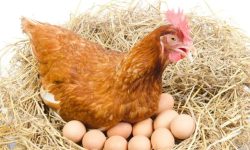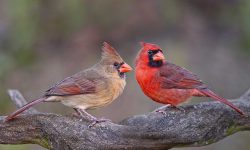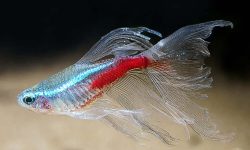The first time a baby penguin enters the water is a breathtaking moment of transformation, balancing on the edge between innocence and independence. Born into some of the most extreme climates on Earth, from the icy cliffs of Antarctica to the rocky coasts of the sub-Antarctic islands, penguin chicks face a daily battle for survival. But no challenge looms larger than learning to swim. The ocean is not only their future habitat—it is their food source, their migration route, and their battlefield. For these birds, swimming is not an elective skill but an evolutionary imperative—one that integrates physiology, instinct, social behavior, and environmental adaptation.
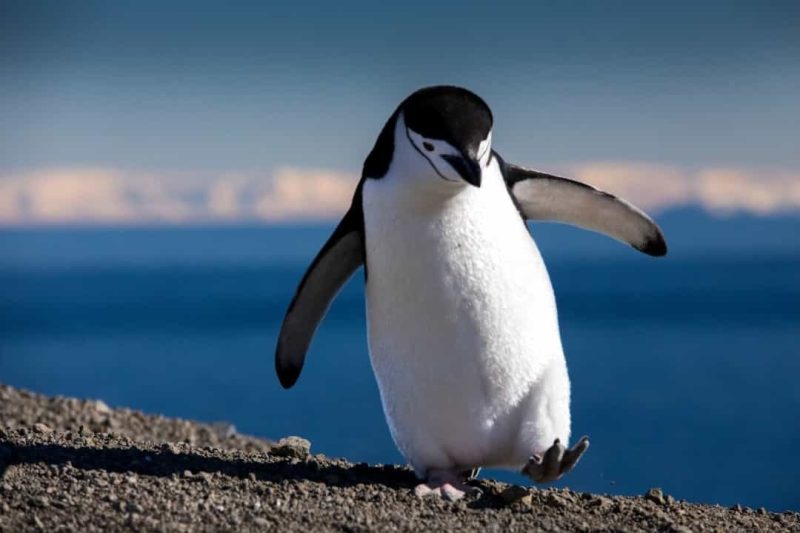
From Hatchling to Water-Ready: The Early Stages
Immediate Dependency and Vulnerability
Penguin chicks emerge from their eggs entirely reliant on their parents for warmth, protection, and nutrition. At birth, they are covered in a thick, fluffy layer of down feathers designed for thermal insulation on land. However, this down lacks waterproofing. Unlike the tightly packed, interlocking contour feathers of adults, down feathers absorb water and lose insulating properties when wet. Immersion in cold water would quickly lead to hypothermia and drowning.
During this phase, chicks are typically kept in brooding positions—tucked beneath a parent’s body or, in the case of Emperor Penguins, balanced atop the parent’s feet and protected by a skin fold. These behaviors are crucial for shielding the chick from extreme cold and wind exposure, especially in polar climates.
Nutritional Demands and Rapid Growth in Penguin Chicks
The early post-hatch period in penguin chicks is characterized by exponential growth and high-energy physiological demands. This phase places intense pressure on the nutritional provisioning system, as the chicks undergo rapid development of vital systems including thermoregulatory capacity, neuromuscular coordination, and immune competency. To meet these needs, penguin parents employ a biologically optimized feeding strategy centered on the regurgitation of semi-digested, nutrient-dense marine food.
This regurgitated diet—rich in lipids, proteins, and essential micronutrients—supports anabolic processes at the cellular level. Proteins serve as the building blocks for muscle fibers, organ tissues, and skeletal structures, while lipids, particularly omega-3 fatty acids, are critical for brain development, energy storage, and the maturation of subcutaneous fat layers, which aid in insulation. The high caloric density of the food allows chicks to sustain the energetic costs of basal metabolism, thermogenesis, and tissue synthesis, all of which occur at an accelerated pace during this developmental window.
Daily caloric intake must scale rapidly to match growth trajectories. For many species, this can mean doubling body mass within just a few days of hatching. As chicks grow larger, their resting metabolic rate (RMR) increases substantially, leading to a higher demand for frequent and larger feedings. These metabolic shifts are tightly coupled with developmental milestones such as feather growth, muscle hypertrophy, and organ differentiation.
To meet these escalating demands, penguin species have evolved synchronized parental care strategies. Typically, one parent remains at the nesting site to guard and thermoregulate the chick, while the other forages at sea. This alternating system of biparental care ensures a near-continuous food supply during the critical first weeks when chicks are most vulnerable to starvation and hypothermia. In species such as the Adélie Penguin (Pygoscelis adeliae), this division of labor is timed precisely with environmental cues, such as sea-ice retreat and peak prey availability, to optimize chick nutrition.
Furthermore, parental foraging success is influenced by oceanographic variables such as prey density, sea temperature, and current patterns. This means that chick growth is indirectly tied to broader marine ecosystem dynamics. During optimal seasons, parents can deliver multiple meals per day, allowing for steady mass accumulation and feather maturation. However, in lean years or under changing climate conditions, reduced food delivery can delay fledging, increase chick mortality, or compromise long-term fitness.
In summary, the nutritional demands of growing penguin chicks are met through a finely tuned interplay of parental investment, dietary composition, and metabolic adaptability. This phase of rapid growth is foundational, determining not only survival through fledging but also the chick’s future foraging efficiency, thermoregulatory competence, and reproductive success.
Behavioral Thermoregulation and Group Protection in Penguin Crèches
As penguin chicks outgrow their dependence on constant brooding but remain physiologically vulnerable, they transition into a semi-independent stage marked by communal aggregation, forming groups known as crèches. These temporary social structures serve multiple adaptive functions—chief among them are behavioral thermoregulation and enhanced protection against predation.
Thermal regulation is a critical challenge for chicks, particularly in polar or sub-Antarctic regions where wind chill and temperature fluctuations can be extreme. At this stage, chicks are still developing their subcutaneous fat layers and down insulation, rendering them partially susceptible to heat loss. In the absence of parental body heat, chicks mitigate this vulnerability by forming tightly packed huddles, in which individuals share radiant body heat and reduce surface area exposure to cold air. This strategy mirrors adult huddling seen in species like the Emperor Penguin and relies on passive heat conservation mechanisms to reduce metabolic demands.
Studies of chick crèches show that individuals positioned toward the center of the group experience significantly warmer microclimates, with internal temperatures several degrees higher than ambient conditions. This group-based thermal buffering reduces the energetic cost of thermogenesis, preserving fat stores and supporting continued growth. Such behavioral thermoregulation illustrates the interplay between physiology and sociality in harsh environments.
Crèches also offer crucial anti-predator advantages, particularly in colonies exposed to aerial threats such as skuas, giant petrels, or sheathbills. While individual chicks are highly vulnerable, the dense aggregation of multiple chicks creates a confusion effect and dilution of risk, whereby the probability of any one individual being targeted is reduced. Vigilant behavior, including distress calls and collective alarm responses, may further deter predators or alert adults to nearby danger. In some cases, older chicks positioned on the periphery may act as inadvertent decoys, increasing the survival chances of those within the group’s core.
The formation of crèches also serves an evolutionary logistic function: by clustering chicks, parents are afforded greater flexibility in foraging range and duration. Rather than alternating turns brooding a single chick, both parents can engage in longer, potentially more efficient foraging excursions while the chick remains in a relatively safe and thermally stable social unit. This adaptation is especially advantageous in resource-scarce or spatially unpredictable marine ecosystems, where optimal prey locations may be distant from nesting grounds.
Colony-level coordination and the timing of crèche formation reflect a fine-tuned evolutionary balance between offspring autonomy and parental investment. Chicks enter the crèche stage only once they can thermoregulate to some degree and withstand brief periods without parental contact. The transition is mediated by age, feather development, and sometimes environmental cues like temperature shifts or predator presence.
In summary, the crèche represents a remarkable convergence of behavioral ecology, physiological necessity, and social strategy. It is not merely a nursery but a complex, emergent adaptation that enables penguin colonies to optimize chick survival while maintaining parental efficiency in unpredictable and often unforgiving ecosystems.
Feather Molt: The Transition to Waterproofing
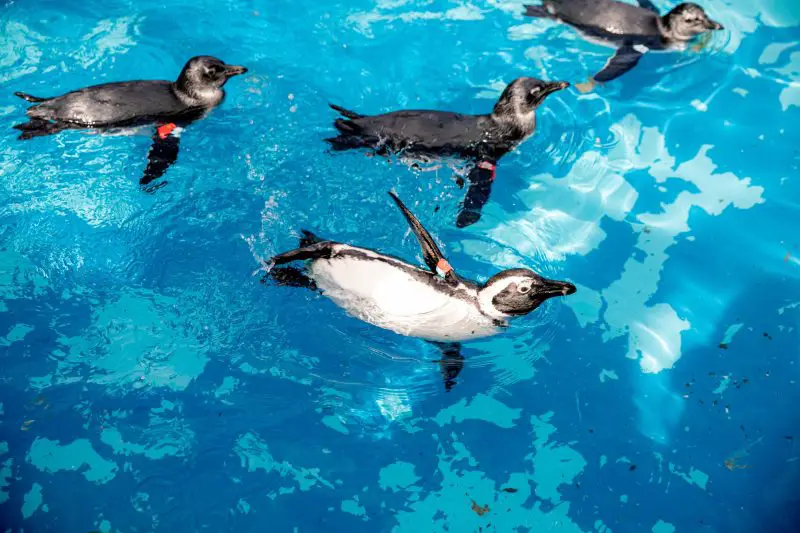
A pivotal moment in a chick’s development is the onset of molt. This process, hormonally triggered and tightly synchronized with age and environmental cues, involves the gradual replacement of down with juvenile contour feathers. These new feathers are streamlined, denser, and crucially—water-repellent.
Waterproofing is enhanced by the chick’s use of the uropygial gland, located near the tail. This gland secretes an oily substance that the chick spreads across its feathers through preening. The oil helps form a hydrophobic layer that traps a cushion of insulating air beneath the plumage, essential for buoyancy and thermal insulation during cold-water dives.
Molt is energetically costly. During this time, chicks often fast, relying on previously stored fat reserves. The transition phase is delicate, as incomplete feather development may leave them temporarily vulnerable to hypothermia if exposed to moisture.
Physiological Readiness for Aquatic Life
Once the molt is complete and the waterproofing barrier is established, the chick’s body is better equipped to handle aquatic challenges. Cardiovascular capacity improves in anticipation of diving, with increased red blood cell counts and the maturation of muscle myoglobin stores for efficient oxygen transport. Simultaneously, thermoregulatory systems adapt, allowing better heat conservation in icy waters.
At this point, the chick—now a fledgling—is structurally and functionally prepared to begin pre-swim conditioning and ultimately take its first plunge into the ocean.
The Importance of Practice: Pre-Swim Conditioning
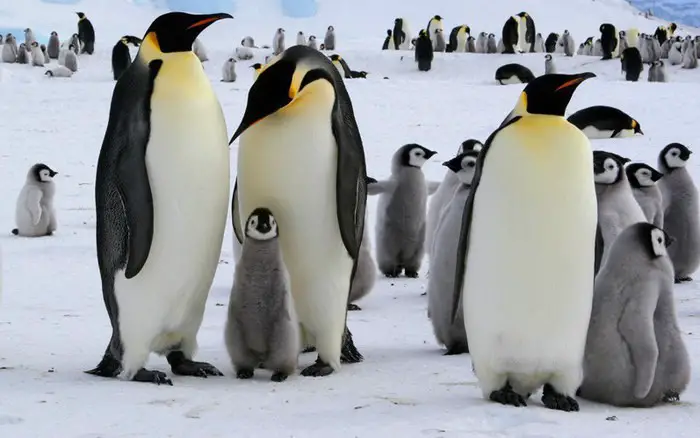
Muscle Development Through Terrestrial Activity in Penguin Fledglings
Prior to their initial entry into the aquatic environment, fledgling penguins undergo a vital phase of neuromuscular conditioning on land. Although penguins are evolutionarily adapted for life in water, the transition from land-bound juveniles to proficient swimmers requires the gradual strengthening and coordination of key muscle groups. This preparatory period is marked by a series of terrestrial activities—flipper-flapping, rapid waddling, stretching, and occasional leaping—that function as a form of functional resistance training for the biomechanical demands of underwater locomotion.
Central to this development is the hypertrophy and activation of the pectoralis major and supracoracoideus muscles, the two primary muscle groups responsible for the powerful downstroke and recovery stroke of the flipper, respectively. While these muscles ultimately serve aquatic propulsion, early land-based activity stimulates muscle fiber recruitment, especially of the oxidative (Type I) and fast-twitch (Type IIa) fibers necessary for endurance and burst swimming. Repetitive flapping mimics the cyclical movement patterns required in swimming, allowing fledglings to precondition the musculoskeletal system without the added complexity of water resistance.
In parallel with muscular development, fledglings engage in dynamic stretching behaviors, particularly wing extensions and body twists, which contribute to the flexibility and range of motion needed for hydrodynamic efficiency. These terrestrial routines help refine proprioceptive feedback mechanisms—the body’s ability to sense limb position and movement in space—which are essential for executing precise, synchronized strokes underwater.
The development of motor control is further supported by sensorimotor integration, where visual and tactile feedback during movement calibrates the neuromuscular responses of the flipper joints and trunk musculature. This process is particularly important as fledglings’ feathers transition into their waterproof juvenile plumage, providing the necessary insulation and hydrodynamics to support sustained swimming. As the feather structure matures, fledglings increasingly engage in more vigorous physical exertion, effectively testing the physiological limits of their growing bodies in preparation for the energy-intensive task of foraging at sea.
In summary, what may appear as playful flapping or awkward waddling on land is, in fact, a biologically crucial training phase. Through structured terrestrial movement, fledgling penguins build the muscular strength, endurance, coordination, and neuromotor readiness necessary for aquatic competence, ensuring they enter the marine realm with the foundational tools for survival.
Environmental Familiarization in Shallow Pools
A critical yet often underappreciated stage in a penguin fledgling’s aquatic development involves exposure to shallow bodies of water—such as meltwater pools, tidal inlets, or sheltered coastal shallows—found in many natural penguin habitats. These low-risk aquatic environments function as transitional ecological niches, providing fledglings with a controlled setting to acclimate to the physical properties of water before confronting the unpredictable dynamics of the open ocean.
In these shallow pools, fledglings encounter water resistance, buoyancy, and temperature variation in a low-threat context free from strong currents and aquatic predators. This gradual familiarization process allows them to explore the mechanics of floating and movement without the immediate need for survival-driven performance. The physical feedback they receive from interacting with water—drag against the plumage, hydrostatic lift, and limb resistance—initiates the neural recalibration of balance and limb coordination, effectively bridging the gap between terrestrial motor skills and aquatic locomotion.
These environments also serve as the first practical test of the fledglings’ newly developed waterproof plumage, which plays a vital role in both insulation and hydrodynamic efficiency. As fledglings immerse themselves, the behavior of the feather structure under wet conditions is observed and reinforced. Successful waterproofing is essential: it traps a layer of insulating air close to the skin, preventing rapid heat loss. Poor plumage performance, in contrast, results in cold-water exposure that can quickly compromise thermoregulation and motor function.
Another key advantage of shallow-water entry is the prevention of cold shock response—a potentially life-threatening reaction caused by the sudden immersion of an unacclimated body into cold water. Cold shock can lead to gasping reflexes, hyperventilation, elevated heart rate, and even loss of motor control. By entering water gradually, fledglings enable their cardiovascular and thermoregulatory systems to adapt incrementally. This controlled exposure enhances vasomotor responses, allowing for better peripheral blood flow regulation, and begins conditioning the penguin’s metabolic heat production systems, such as shivering thermogenesis and brown fat utilization.
Furthermore, the predictability and accessibility of shallow pools promote repeated exposure and positive reinforcement, helping fledglings build both physical tolerance and behavioral confidence. These early aquatic experiences form the basis of a sensory and emotional mapping of the water environment, reducing fear-based hesitation and increasing readiness for deeper, longer excursions.
In essence, shallow-water environments provide more than just a safe space—they are ecological training grounds that nurture physiological resilience, sensorimotor adaptation, and survival readiness, all of which are indispensable for the fledgling’s transition into a fully aquatic lifestyle.
Social Learning and Observational Behavior in Penguins
Penguins exhibit complex forms of social learning that are critical for the survival of fledglings as they transition from the relative safety of terrestrial nesting sites to the perilous marine environment. Unlike instinctive behaviors, many survival skills in penguins—especially those related to foraging and predator evasion—are acquired through observational learning, a process whereby individuals learn new actions by watching and imitating others.
In penguin colonies, fledglings often closely observe the actions of adult conspecifics or slightly older juveniles, particularly during key behavioral milestones such as entering the water, initiating dives, and resurfacing. These acts, which may seem routine for seasoned adults, represent life-or-death challenges for naïve fledglings encountering the ocean for the first time. By visually tracking these behaviors, fledglings develop a cognitive model of movement timing, orientation, and coordination required for aquatic locomotion. This form of behavioral mimicry serves as an efficient, low-risk learning strategy, minimizing the fledglings’ exposure to hazards while accelerating skill acquisition.
Neuroscientific studies in other avian species suggest that social learning is mediated by mirror neuron systems and enhanced neural plasticity during early developmental windows. Although direct studies on penguins are limited, the presence of socially facilitated learning patterns and cohort-based exploration strongly indicate that similar neuroethological mechanisms may be at play.
Social learning is not limited to behavioral imitation—it also exerts a powerful psychological effect on stress regulation. When fledglings approach the ocean in synchrony with peers, their anxiety responses are significantly mitigated. This collective behavior, often described as “group bravery,” reduces hesitation and encourages risk-taking in otherwise fearful individuals. Social cohesion during water entry likely triggers a reduction in glucocorticoid stress hormones, promoting bolder and more exploratory behavior in young penguins.
Additionally, non-verbal cues such as vocalizations, body posture, and spatial proximity contribute to a reinforcement loop. For example, a fledgling may feel encouraged to dive after hearing reassuring contact calls or observing relaxed body language from an adult. These subtle forms of social reinforcement provide critical feedback, especially when paired with successful outcomes (e.g., surfacing safely or avoiding predators), further anchoring learned behaviors.
In summary, social learning and observational behavior in penguins are not merely passive phenomena but are central to ontogenetic development and ecological fitness. They facilitate rapid adaptation to marine life, reduce the likelihood of fatal mistakes, and embed fledglings within a network of shared survival strategies shaped by generations of experience.
Psychological Conditioning and Risk Minimization
In addition to physical and environmental conditioning, fledglings must also overcome instinctive fear. The first plunge into open water represents a psychological threshold: leaving the safety of the land and entering an unfamiliar, three-dimensional world. Pre-swim rituals—such as pacing at the shoreline or tentatively dipping a beak—may seem trivial but serve important cognitive functions, allowing the bird to assess danger and prepare mentally for the dive.
This behavioral gradient—from land to shallows to surf—illustrates how penguins develop not only the physiology but also the confidence necessary for survival in a marine environment.
Conclusion: The Evolution of Independence
The journey from fragile hatchling to confident swimmer is not a single moment but a coordinated transformation involving physical development, social bonding, environmental exposure, and instinctive drive. It is one of nature’s most finely tuned developmental sequences, balancing risk with preparation.
By the time a young penguin takes its first dive into the ocean, it carries within it the cumulative legacy of millions of years of evolution. Every stroke through the water is powered by biology and honed by behavior. These fledglings are no longer just surviving—they are mastering the sea.
In crossing from land to ocean, penguin chicks don’t just learn to swim—they become penguins in full: marine birds sculpted by the cold, the currents, and the call of the wild.

